On the western slope of the Wasatch Range, Salt Lake City is well known for its giant lake and for being a winter playground, with an abundance of chairlifts, backcountry ski runs, snowshoeing trails, and more snowy activities within reach less than an hour from downtown. But locals know that Salt Lake City has just as much outdoor adventure to offer during the warmer months. In fact, from the expansive canyons of the neighboring Wasatch Range to the foothills that form the edge of downtown, Salt Lake City is a hotspot for summer wildflowers.
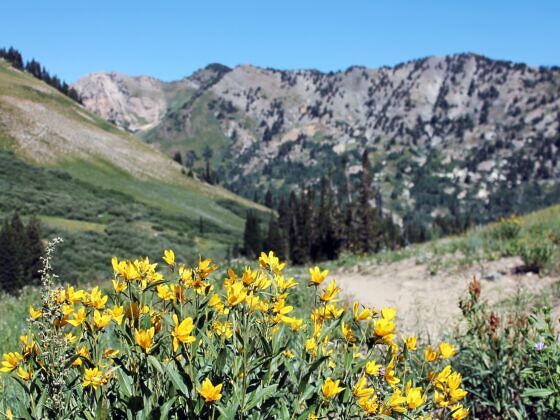

Everything You Need to Know About Salt Lake City’s Insane Wildflower Season
If you visit Salt Lake City between mid-June and August, rainbows of wildflowers brighten the surrounding slopes and line their trails. It’s a spectacle so delightful that it’s almost overwhelming — in the best way. Here’s the lowdown on Salt Lake City’s wildflower season, including when to see them, where to go, and what to do when you’re not admiring the flora.
- Where to see wildflowers in Salt Lake City
- When to see wildflowers in Salt Lake City
- Wildflower photography tips
- Wildflower viewing tips
- What to do in Salt Lake City
- Where to eat and drink in Salt Lake City
- Where to stay in Salt Lake City
- How to get to Salt Lake City
- How to get around Salt Lake City
The best places to view wildflowers in Salt Lake City
Four areas of greater Salt Lake City stand out as wildflower hotspots. You can head into the mountains to hit the trails in Big and Little Cottonwood canyons, stay in town and visit Red Butte Garden and the Bonneville Shoreline Trail, or experience them all.
Albion Basin
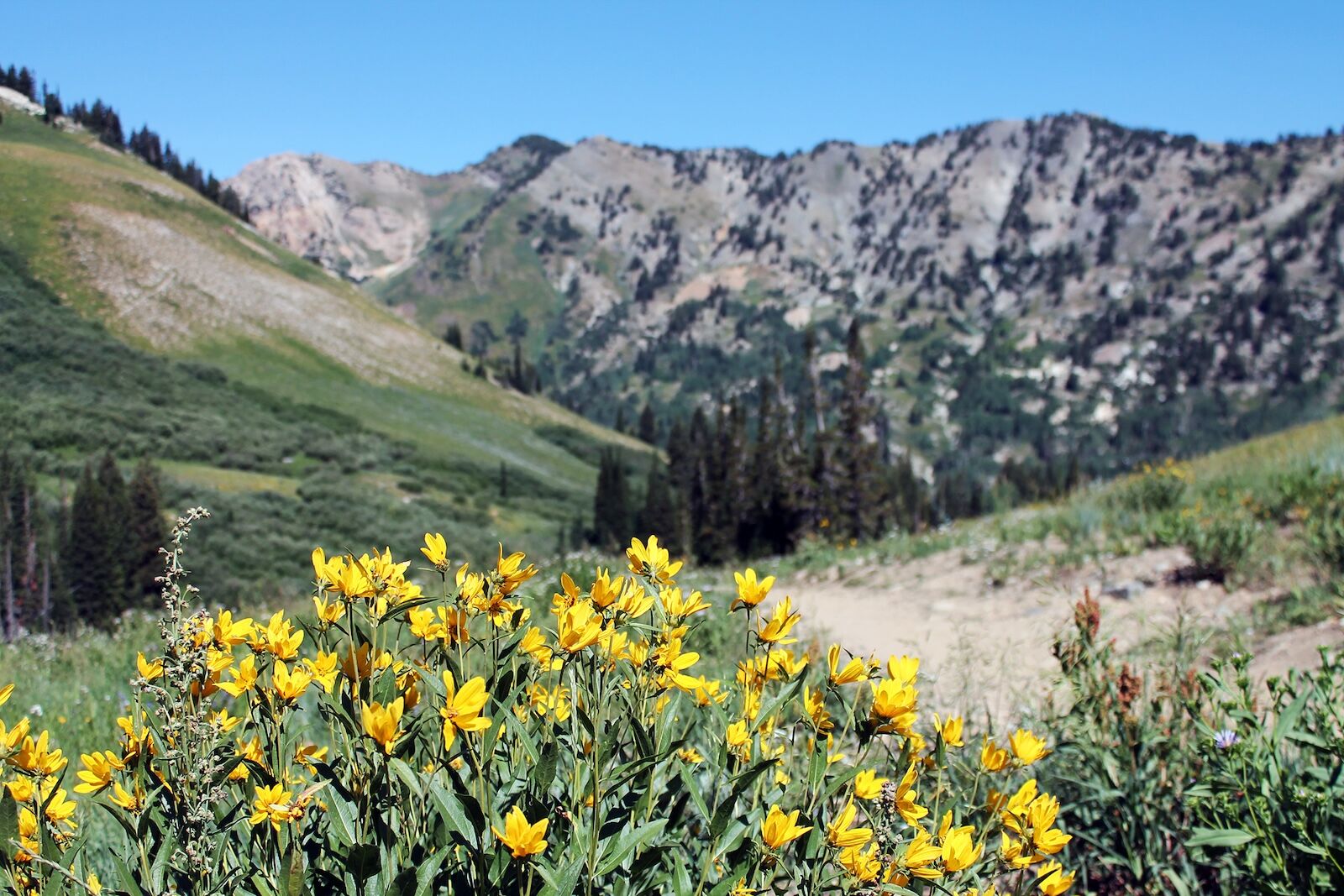
Photo: Sarah Boles
When I first set out to experience the wildflowers of Salt Lake City, every person I spoke with and every article I read seemed to agree that Albion Basin at Alta Ski Area in Little Cottonwood Canyon was the all-around best place — not just in Salt Lake City but in all of Utah. After visiting, I can confirm that Albion Basin is a winner to me, as well.
For being tucked in the back of a canyon, Albion Canyon is fairly accessible. To reach Alta Ski Area, you drive southeast of downtown, enter Little Cottonwood Canyon, and take the road all the way up. At the Albion Basin, you have options. You can park there and hike up to Albion Meadow, where you’ll find the greatest concentration of wildflowers. It’s a gradual climb on a trail that switches between dirt and rock, shaded and exposed, but the whole thing is lined with wildflowers and towering spruce and fir trees. From Albion Meadow, a side trail leads up to a parking lot. That’s the second option: If you need a shorter hike to reach the meadow, you can drive there from Albion Basin, although parking is very limited.
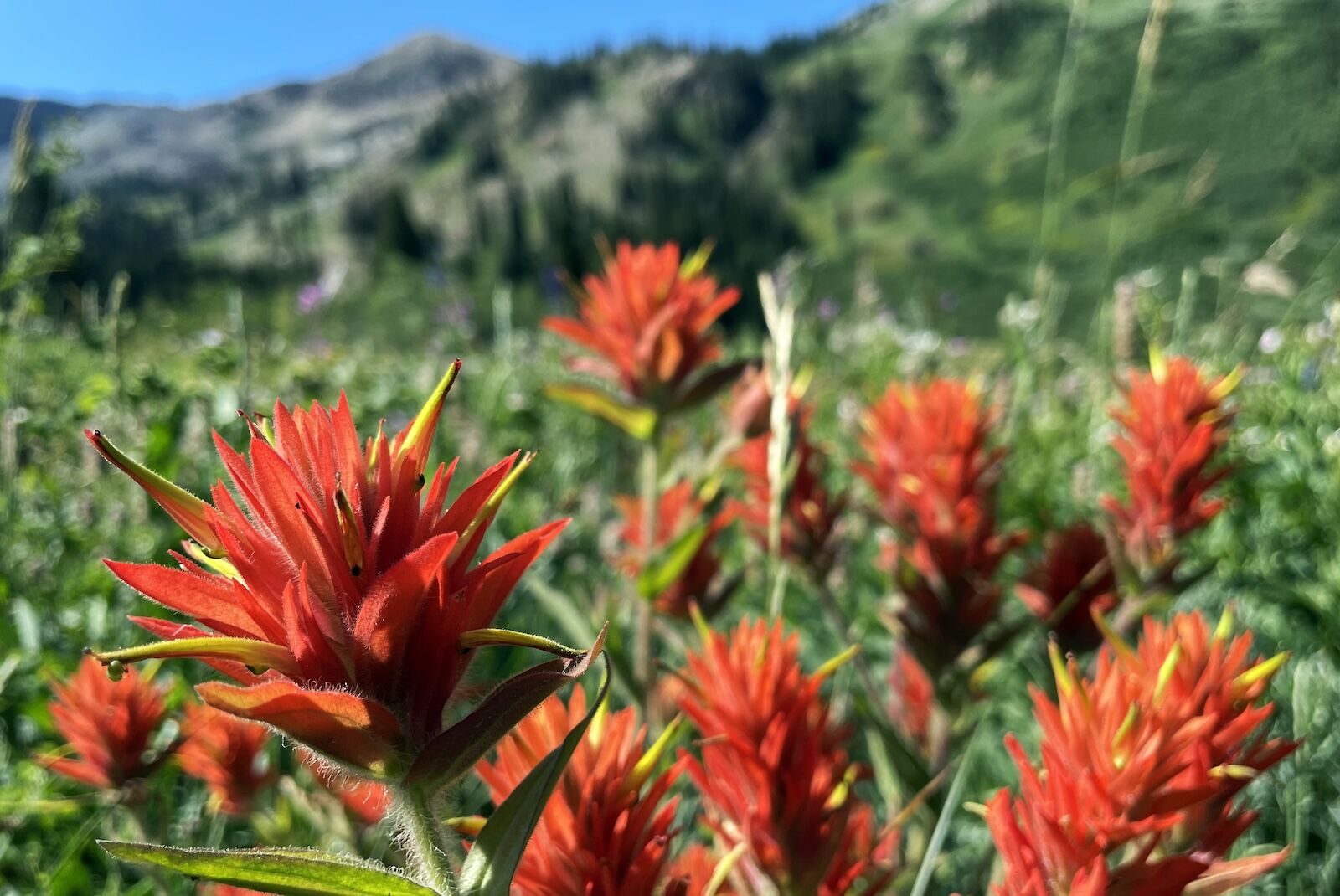
Photo: Sarah Boles
Once you reach Albion Meadow, wildflowers stretch in all directions as far as you can see. You can continue on this trail as long as you like. It eventually leads to a turn off for Cecret Lake and continues over the mountains into Big Cottonwood Canyon to my second favorite place for wildflower viewing around Salt Lake City. If you feel content after exploring the meadow, you can also return back to the basin the same way you came.
Early morning and late afternoon provide the best lighting for wildflower photos at Albion Basin. But let’s be honest, the basin is gorgeous any time of day. Keep in mind, once you reach Albion Meadow, you lose your shade, so pack your hats, sunnies, protective clothing, and sunscreen.
Alta: Alta Ski Area, Highway 210, Alta, UT 84092
Lake Mary Trail
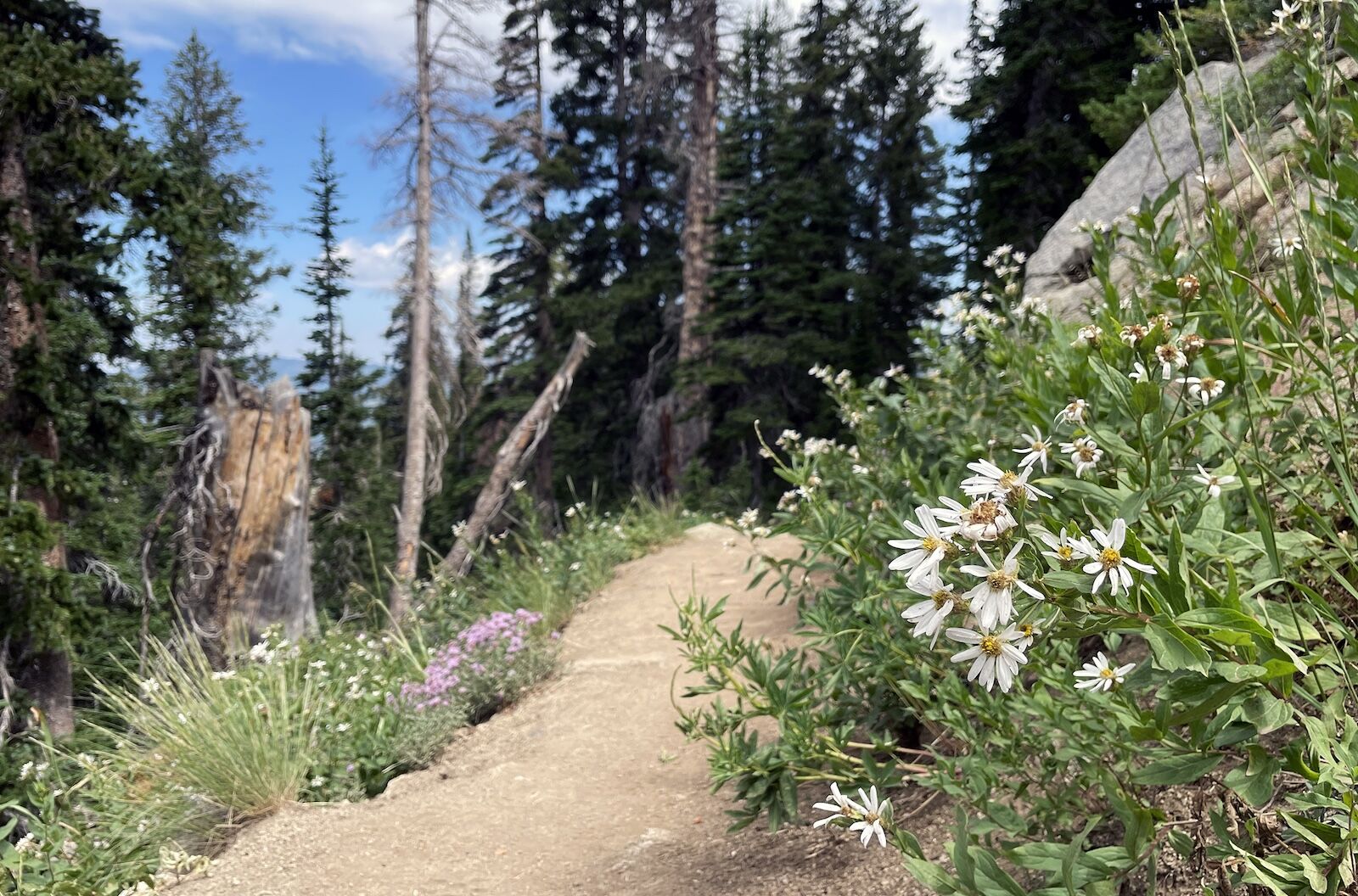
Photo: Sarah Boles
Southeast of downtown Salt Lake City, at the end of the road up Big Cottonwood Canyon, sits Brighton Resort. On summer weekends, the parking lot fills with vendors and shoppers at the Big Cottonwood Flea Market, and the air fills with the sounds of live music and the smells of local barbecue. Past the resort, you’ll find the trail for Lake Mary.
Substantially steeper (especially at the beginning) than the trail at Albion Basin, you’ll follow the dirt and rocky path up the mountain, weaving around boulders, under gondolas, and through a disc golf course. Plan for a rocky, wet crossing just below Lake Mary. I brought extra socks as the shoes I packed were not waterproof. The way up was fine, but I happily changed into dry socks after crossing this area on the way down. This is the only hazardous part of the hike, as the rocks get slipperier the more people step on them to cross.

Photo: Sarah Boles
Once you reach Lake Mary and admire its beauty, you can follow a trail to circumnavigate it or continue on for an extra mile to reach two more lakes: Lake Martha and Lake Catherine. I recommend pushing on all the way to Lake Catherine for killer canyon views. Plus, the final lake is where you’ll find the greatest density of wildflowers, at times taking over the trail.
Once you get your fill of wildflowers at Lake Catherine, continue above it to a lookout point, or cross over the ridgeline and head down into Little Cottonwood Canyon where you’ll eventually connect with the Albion Meadow. You can head back the way you came for an approximately 4.5-mile hike, and treat yourself to some loaded fries or barbecue at the resort.
Brighton Resort: 8302 South Brighton Loop Road, Brighton, UT 84121
Red Butte Garden
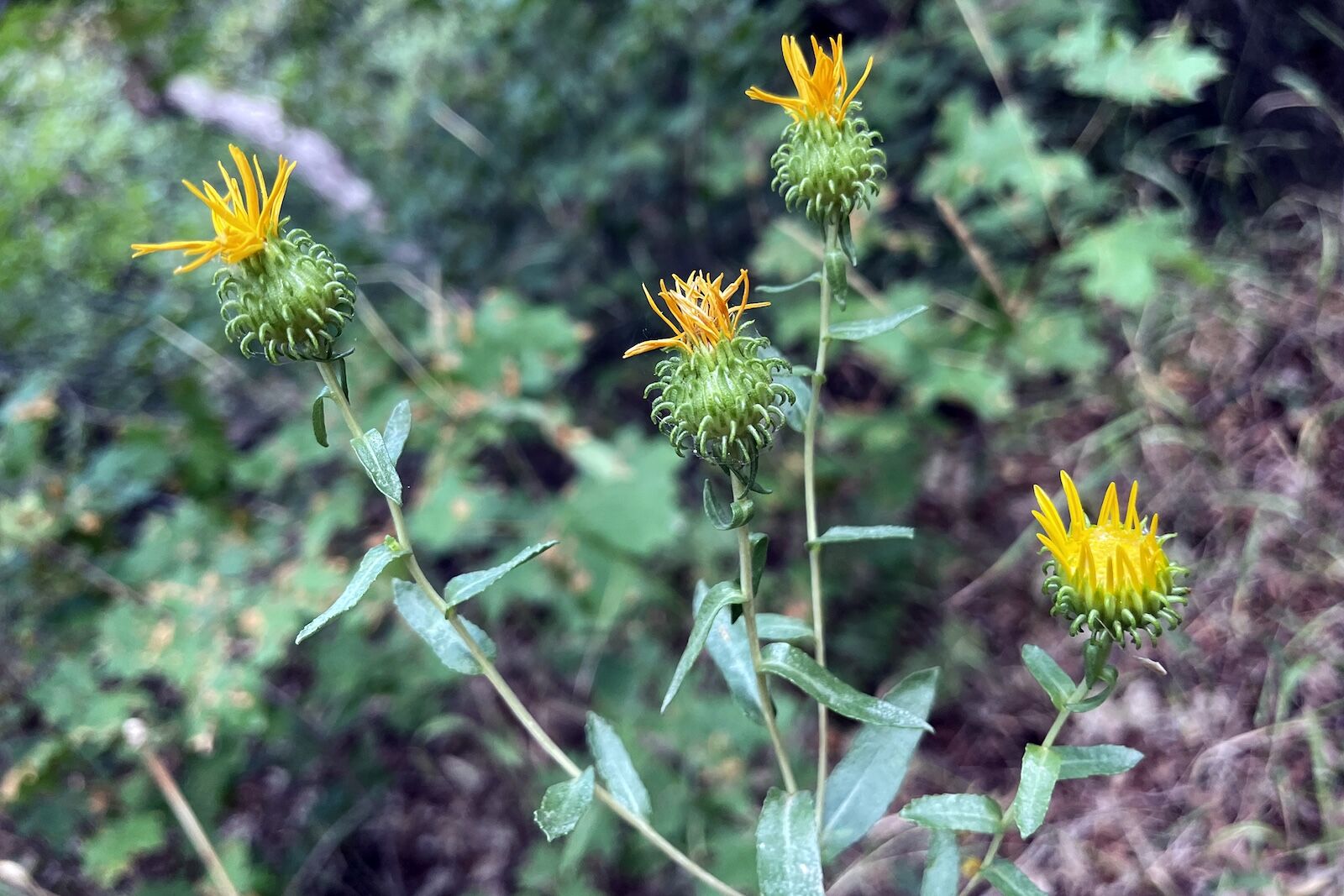
Photo: Sarah Boles
To enjoy Salt Lake City’s wildflowers closer to downtown, head straight east to the foothills of the Wasatch Range to explore the Red Butte Garden at the University of Utah. There, you’ll find 21 acres of developed gardens separated into themes, as well as five miles of hiking trails up into the foothills.
While the garden features plants from around the world, the best places to find wildflowers are in the Red Butte Garden Natural Area. If you’re pressed for time, head to the Meadow and the Oak Tunnel.
Red Butte stays open until 9 PM during the summer, making it a great place to watch the sunset over downtown Salt Lake City in the valley below. The Water Conservation Garden area winds its way up the hill and offers multiple comfortable seating areas. You’ll find similar gorgeous views on any of the hiking trails in the Red Butte Garden Natural Area.
Red Butte Garden: 300 Wakara Way, Salt Lake City, UT 84108
Bonneville Shoreline Trail
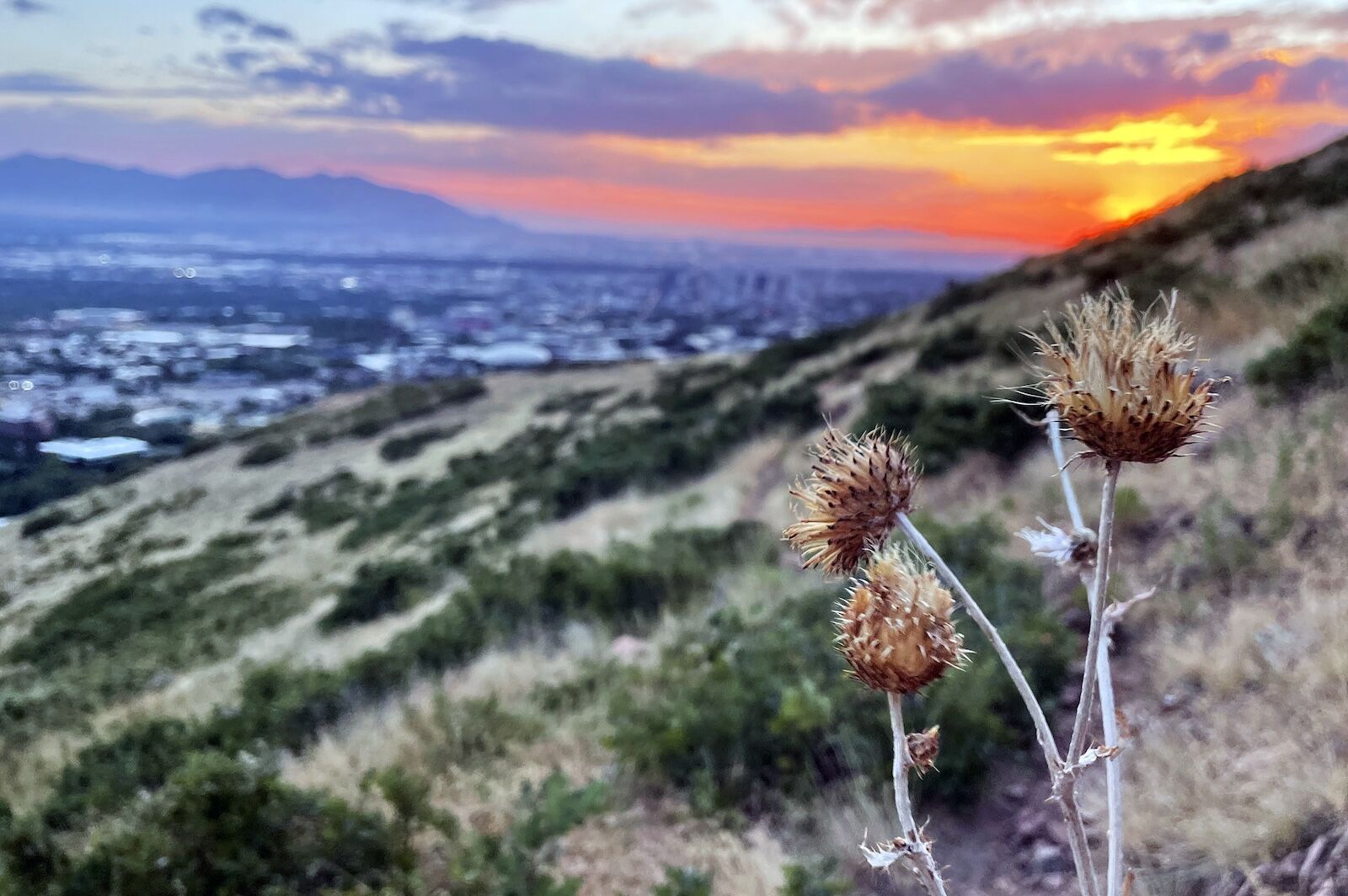
Photo: Sarah Boles
Another place to enjoy wildflowers close to downtown Salt Lake City is along the Bonneville Shoreline Trail (BST). This trail runs over 100 miles from the Idaho border south, following the shoreline of the ancient glacial lake that once covered the area.
The BST has many access points in Salt Lake City, including near the Natural History Museum of Utah and Red Butte Garden. From the BST, you can venture into the hills up a variety of offshoot trails, making this area another popular area to catch the sunset, as well as view wildflowers at lower elevations than in the canyons.
The best times to view wildflowers in Salt Lake City
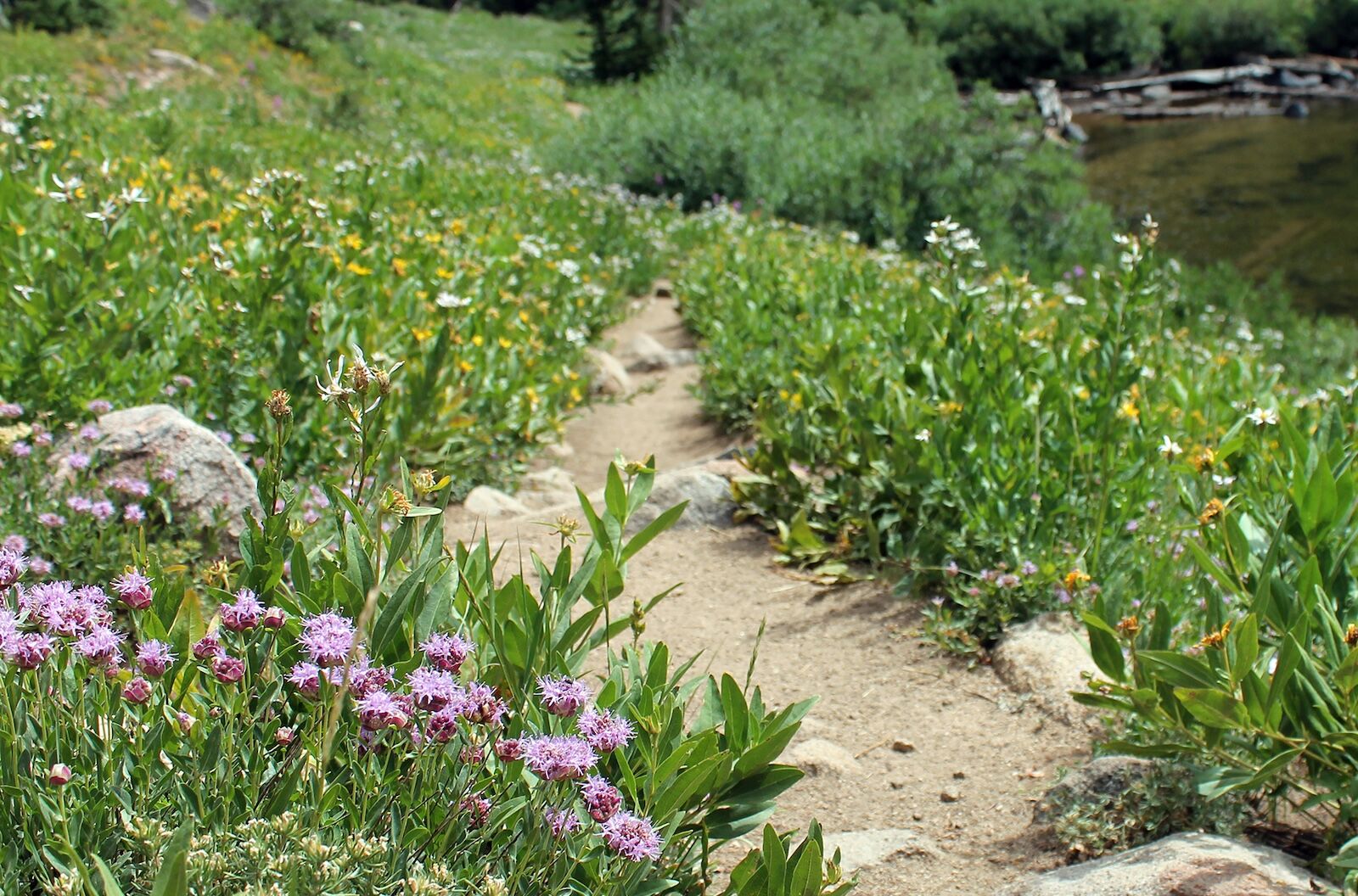
Photo: Sarah Boles
The start of wildflower season in the Salt Lake City area depends on the weather. Often, when the snow melts, wildflowers begin to bloom in mid-June at lower elevations and at the end of June up in the canyons at higher elevations.
Your best bet is to go during July. The hills (foothills and mountains alike) are alive with vibrant colors at this point at all elevations. Even better, if you’re in town over the weekend, that’s when the Cottonwood Canyons Foundation holds its annual Wasatch Wildflower Festival. For two weekends in July, the foundation hosts a celebration at each of the canyons’ four ski resorts: Alta, Brighton, Snowbird, and Solitude.
By August, wildflower season in the foothills has passed. However, the sun illuminates the golden color of the grassy slopes, which contrasts perfectly with bluebird skies. Higher elevations in the canyons usually go strong through August — and, once schools start up again, you can take advantage of less-crowded trails.
Wildflower photography tips
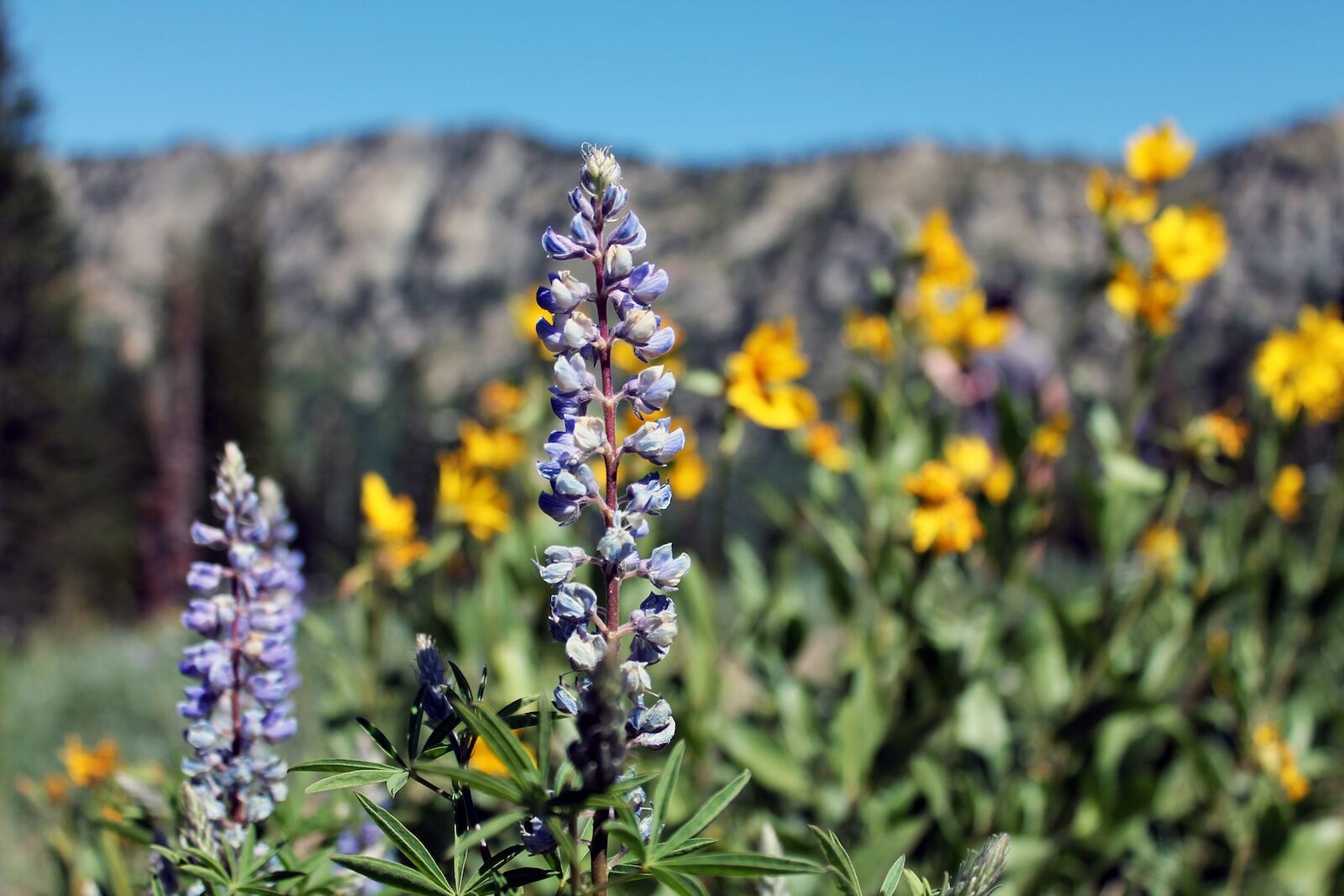
Photo: Sarah Boles
The great thing about photographing wildflowers is that they look gorgeous from every angle. Take advantage of that by playing with your perspective. Shoot the same flowers from the front, the back, the side, and from above.
Play with the composition of your photo. Albion Meadow provides sweeping views of thousands of wildflowers. This gives you the opportunity to capture that immenseness with wide and panoramic shots, as well as the up-close and personal vertical shots that capture the unique textures and patterns of the flowers.
Look for interesting backgrounds for your flowers. Sure, a tight shot of a wildflower is interesting with other flowers out of focus in the background, but challenge yourself to find wildflowers with other objects behind them, like the sky, a boulder, or a tree. The contrasting texture and dull color of a granite boulder or fir tree’s bark will make the flowers’ unique beauty and color stand out even more.
Wildflower viewing tips
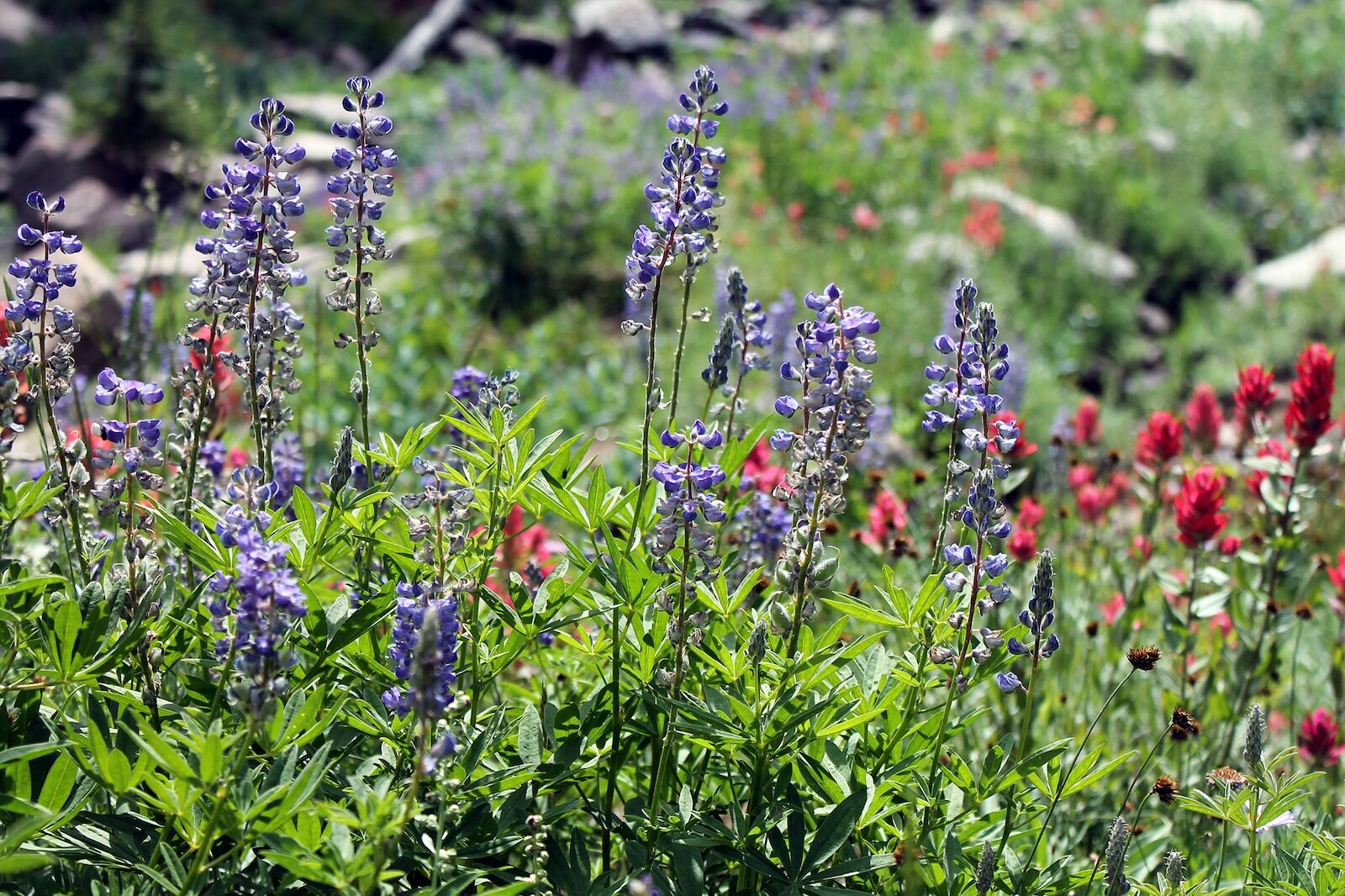
Photo: Sarah Boles
Leave No Trace
As with all outdoor recreating, while viewing Salt Lake City’s wildflowers, you should practice Leave No Trace principles. This includes packing out what you pack in, staying on trail, following local rules regarding pets, and not picking the wildflowers.
Altitude
Downtown Salt Lake City sits at over 4,000 feet above sea level, with the visitors center at Red Butte Gardens at just over 5,000 feet. The parking lots for the aforementioned ski resorts sit at over 8,500 feet. Keep in mind that, depending on where you’re visiting from, you may need time to acclimate to the altitude, even in the city. Plan for slower hikes and allow yourself to take frequent breaks, hydrate, and give yourself some grace if your lungs burn.
Wildlife
Before hitting the trails, review what to do if you find yourself face to face with wildlife. Hint: your reaction to a moose coming at you should be different than if it’s a mountain lion, and both live in the area.
Things to do in Salt Lake City
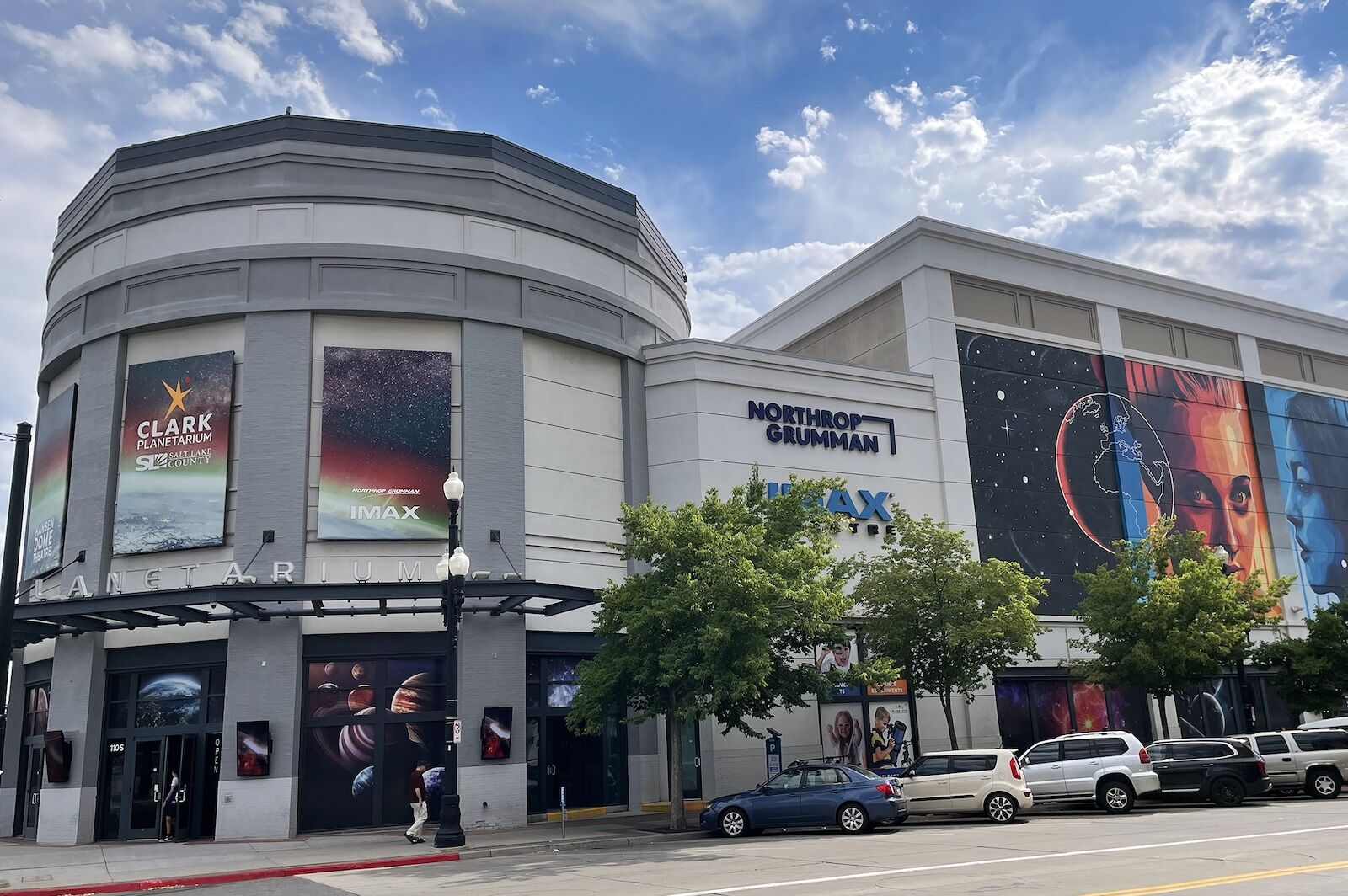
Photo: Sarah Boles
If you want to explore more of what Salt Lake City has to offer beyond its wildflowers, consider purchasing the Salt Lake Connect Pass. It comes in 1-day, 2-day, and 365-day options, and gives you entry to 18 different experiences around the city, including the Natural History Museum of Utah, Red Butte Gardens, Clark Planetarium, and Discovery Gateway Museum. The app provides you with a checklist of places that you’ve visited and those you’re still eligible to enter, as well as maps and visitor information, all in one easy-to-use place.
Natural History Museum of Utah
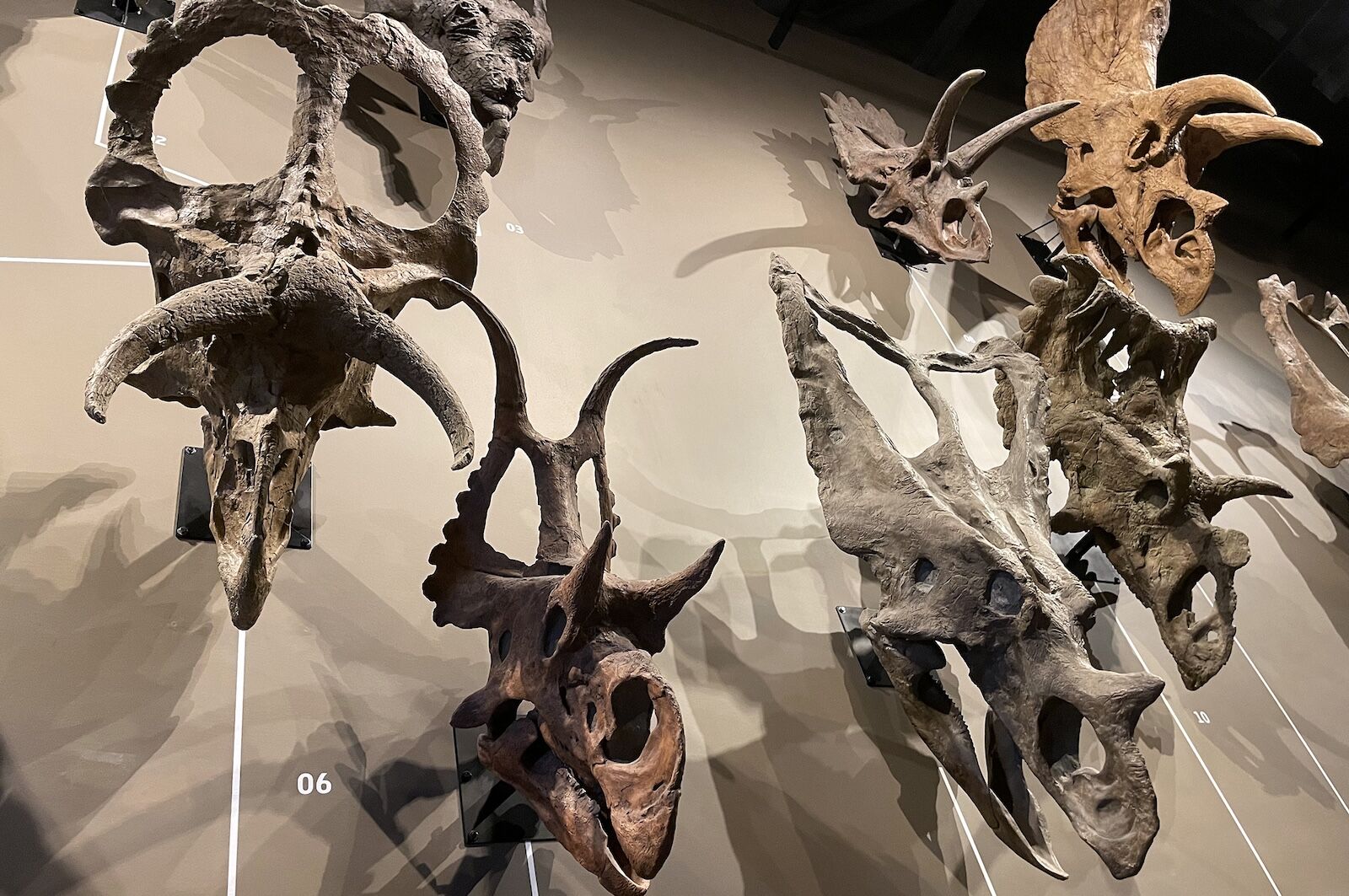
Photo: Sarah Boles
If you only have time for one non-wildflower adventure while visiting Salt Lake City, head to the Natural History Museum of Utah. Let’s start inside. Before you even have to present your ticket, you can enjoy the floor-to-ceiling windows (several stories tall) that display a gorgeous view of downtown Salt Lake City and the Oquirrh Mountains.
If you only have an hour to explore, head straight to the Past Worlds exhibit. This experience spans multiple levels of the museum that flow together seamlessly along a path that winds through millions of years of history. One highlight: you’ll encounter a multitude of interactive spots for adults and kids to explore the dinosaurs firsthand.
Natural History Museum of Utah: 301 Wakara Way, Salt Lake City, UT 84108
Delta Center
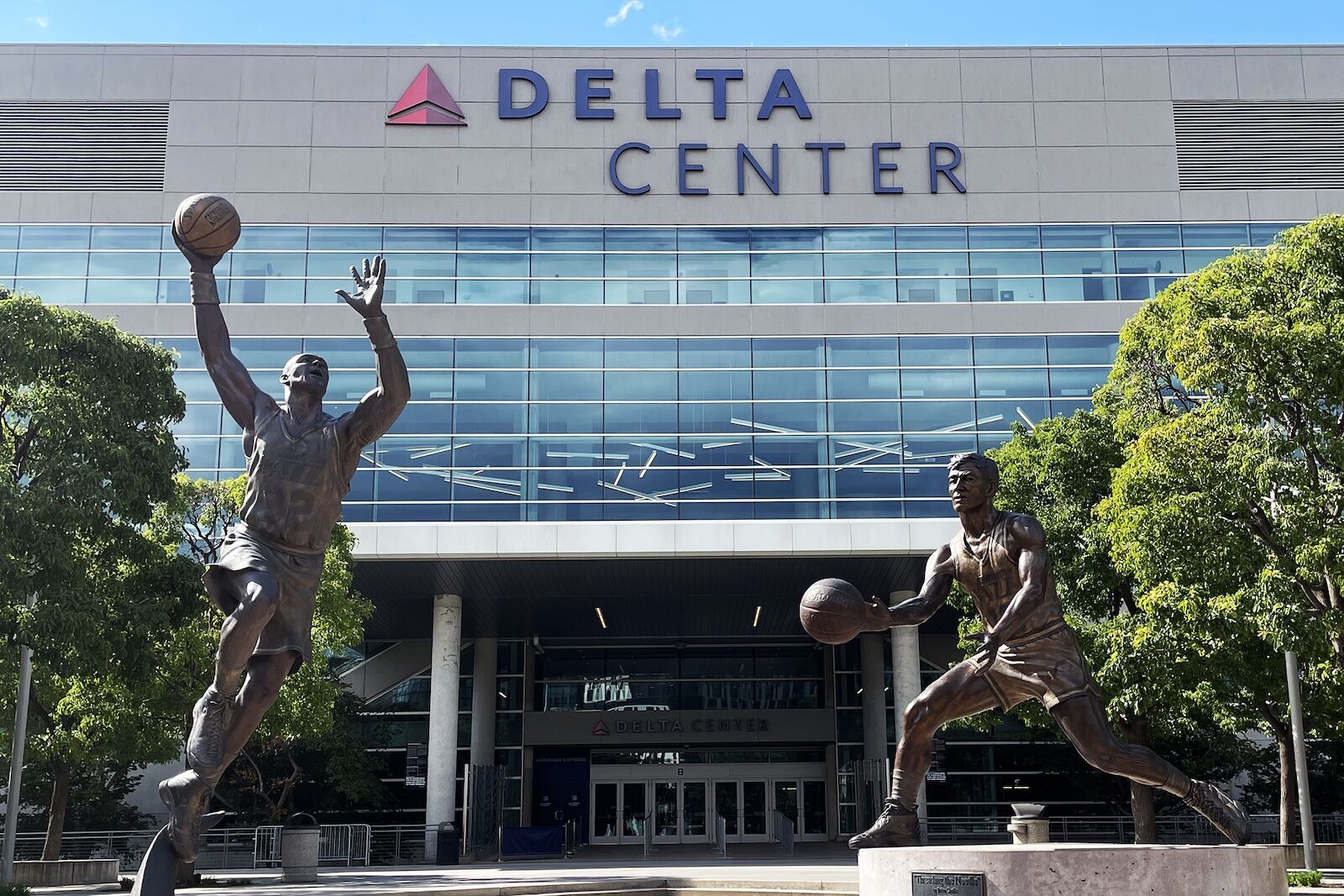
Photo: Sarah Boles
Having grown up in the ‘90s in Chicago, I enjoyed reliving some core childhood memories by visiting the Karl Malone and John Stockton statues on the back side of the Delta Center during my visit. The Utah Jazz still call the center home and will soon share it with an NHL team that relocated to Salt Lake City. As you plan your visit, check out what teams are in town or concerts are planned at the center. Light rail drops you off right in front, it’s a short walk from many downtown hotels, or you can try out the city’s electric scooters to get there.
Delta Center: 301 S Temple, Salt Lake City, UT 84101
Salt Lake City festivals

Photo: Sarah Boles
Check out the events tab at Visit Salt Lake to see what events might be happening when you plan to visit. Salt Lake City has a wide variety of annual festivals, including Utah Pride in June, the Wasatch Wildflower Festival in July, and the Sandy Balloon Festival in August.
Where to eat and drink in Salt Lake City
Felt Bar & Eatery
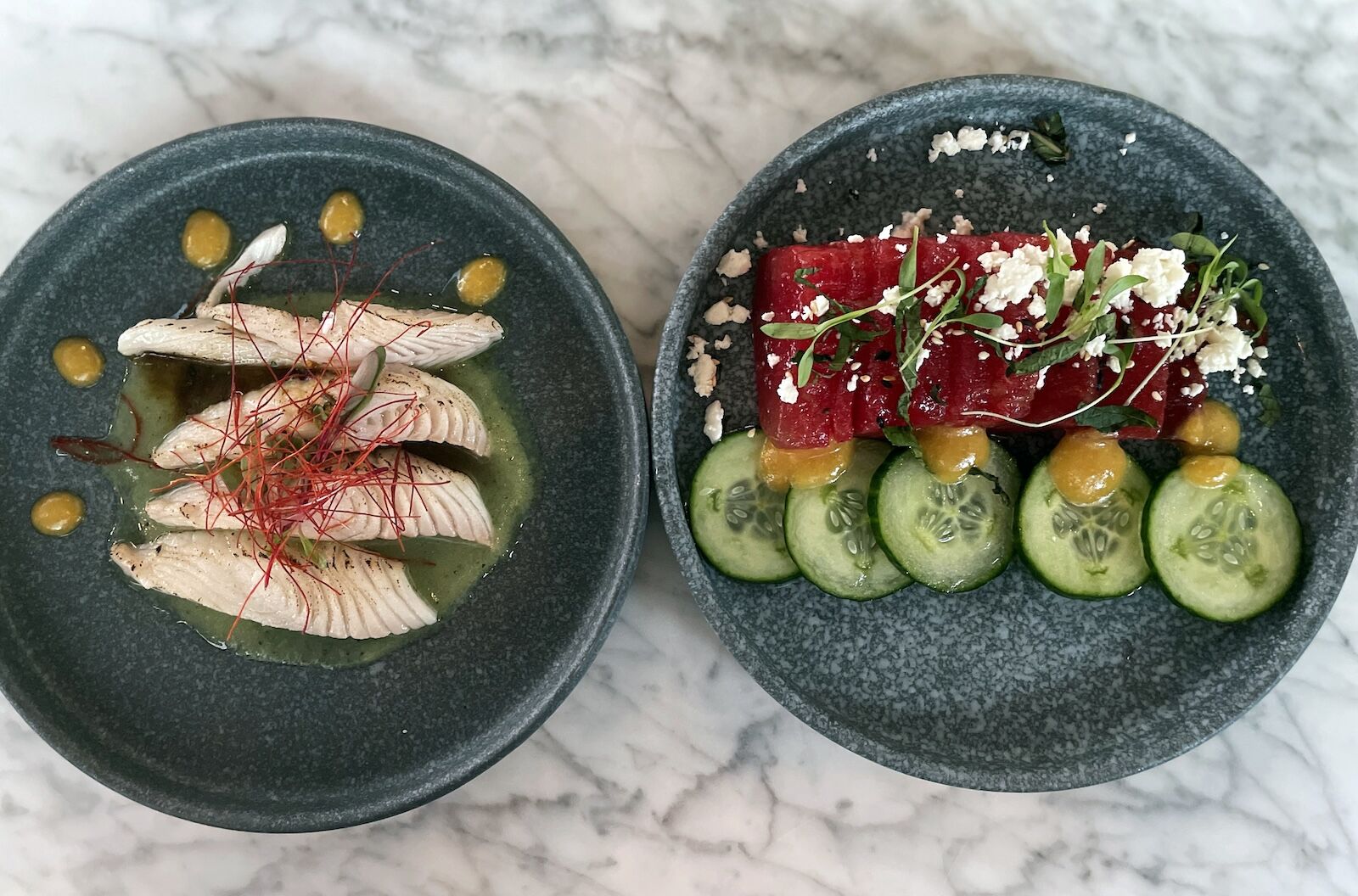
Photo: Sarah Boles
There’s a common misconception that Salt Lake City is a dry town. Let me dispel that myth: Salt Lake City has no shortage of unique and fun bars downtown. If you’re looking for cocktails (or mocktails) as well as small plates to share with friends on a night out, head to Felt Bar & Eatery. Make sure to order a watermelon sashimi for the table; it’s gorgeous and delicious.
Felt Bar & Eatery:341 S Main St STE 101, Salt Lake City, UT 84111
Hallpass Food Hall
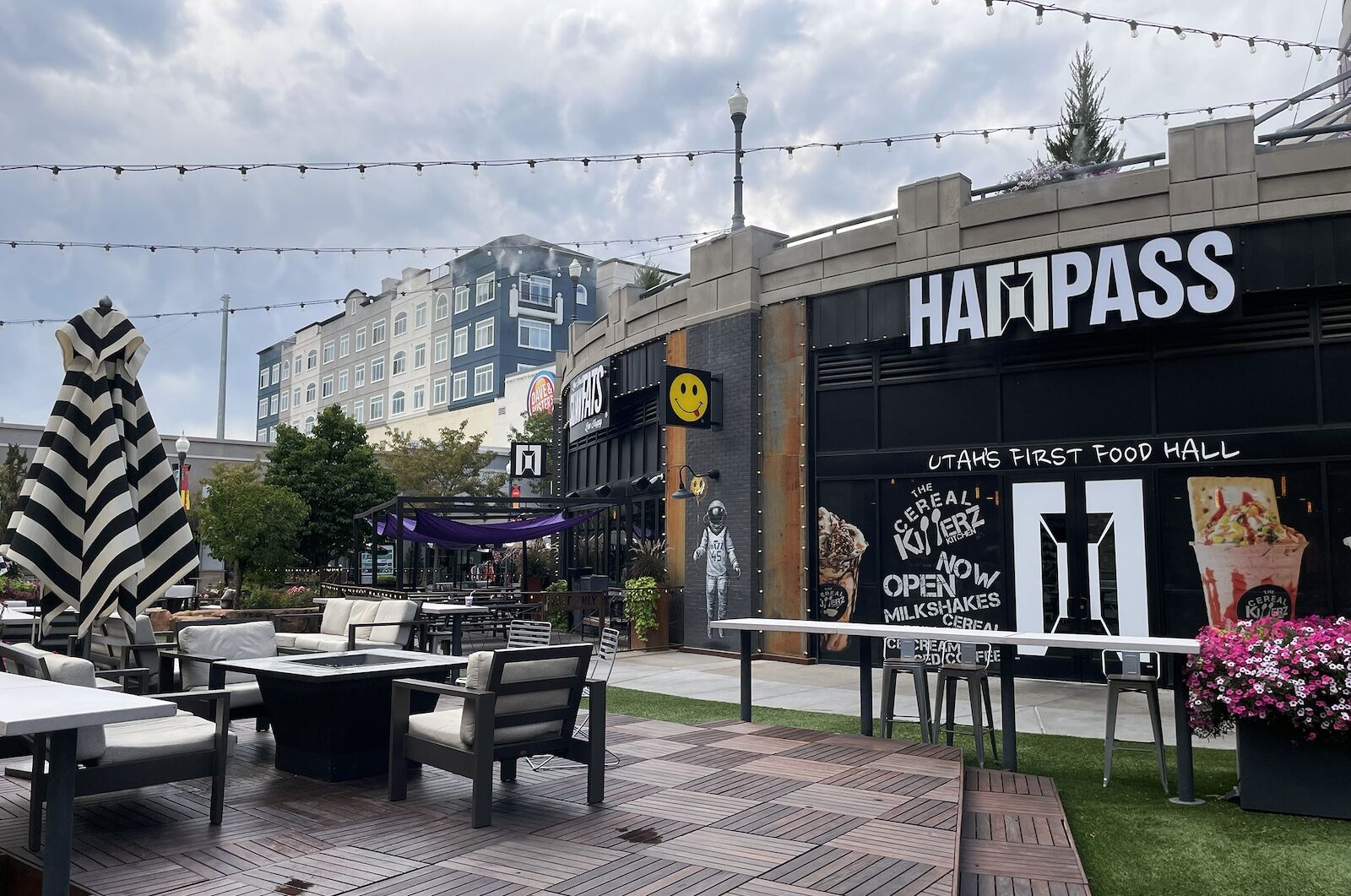
Photo: Sarah Boles
If you find yourself near the planetarium or the Delta Center while in Salt Lake City, swing by Hallpass for a locally curated meal or drink. Watch a game at Beer Zombies draft room and beer garden or explore the other vendors inside. My personal favorite is SkinnyFATS, which offers a split menu of comfort foods and options for those who want to eat cleaner. Tu-Nuts is my go-to order there, made of ahi poke in a cucumber boat.
Besides the fact there’s something that will make every stomach happy, the best part of dining at Hallpassis is that it’s located in The Gateway, an open-air mall and gathering space. Take your food to-go, head outside, and eat at one of the swinging picnic tables or around a firepit.
Hallpass: 153 S Rio Grande St, Salt Lake City, UT 84101
The Copper Onion

Photo: Sarah Boles
From shareables to specials to dessert, The Copper Onion serves the total package. Located in the heart of downtown, right off of Main Street, it has a large outdoor seating area, as well as a warm, intimate atmosphere inside. The Copper Onion is a great place for high-quality seafood dishes, although meat-eaters can’t go wrong with its iconic Copper Onion Burger. Whatever you do, if the carrot cake is on the dessert menu, order it.
The Copper Onion: 111 E Broadway, Salt Lake City, UT 84111
Cupla Coffee
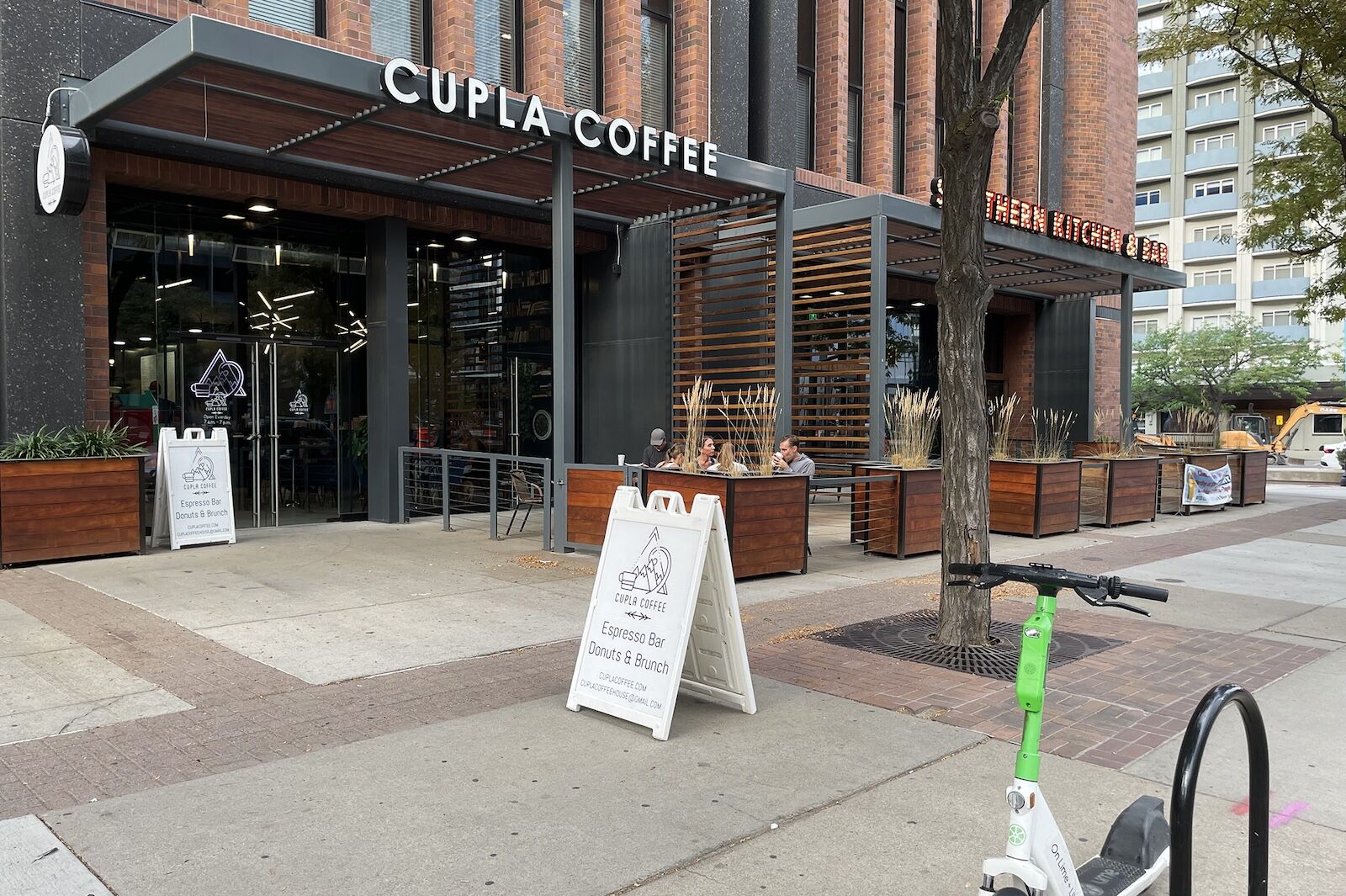
Photo: Sarah Boles
Located a block from the convention center, a light rail station, and many downtown hotels, Cupla Coffee is the perfect place to start your morning in Salt Lake City. Choose from an extensive menu of caffeinated beverages, including coffees, teas, lemonades, and hot chocolates. But don’t sleep on the food menu. As a self-proclaimed bougie toast connoisseur, I highly recommend Cupla’s Medi toast. Dine inside and pursue the bookshelves and board games while you wait for your order, or sit alfresco in the fenced-in outdoor patio.
Cupla Coffee: 77 W 200 S, Salt Lake City, UT 84101
Where to stay in Salt Lake City
Kimpton Hotel Monaco Salt Lake City
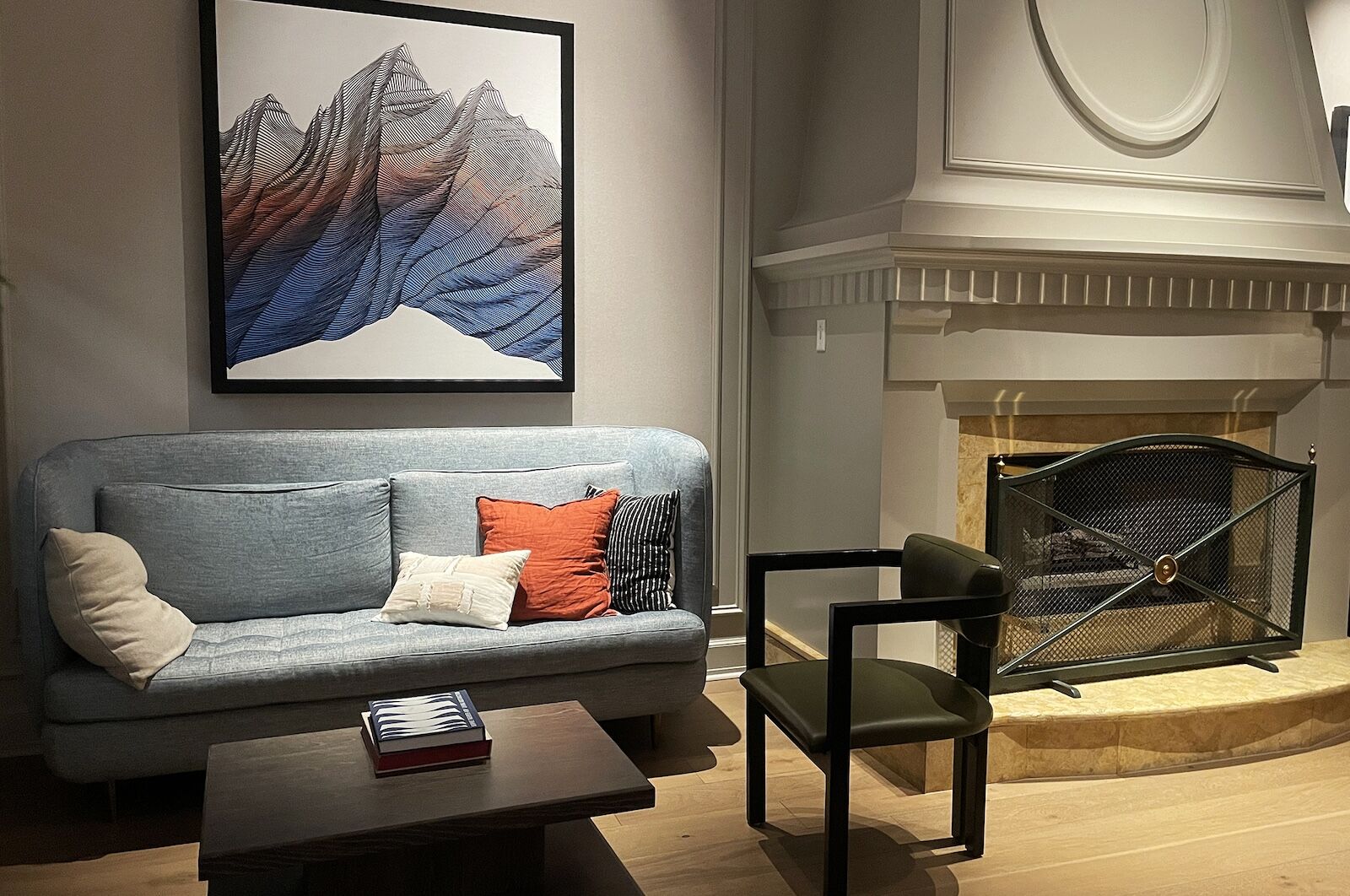
Photo: Sarah Boles
The Kimpton Hotel Monaco is a boutique hotel with a modern yet cozy feel and decor that ties in the natural beauty from the surrounding mountains and lake. The ground floor has several common areas with seating, chess and checkers boards, and a daily happy hour.
But the hotel’s biggest boon is its location: It’s conveniently positioned near shops and restaurants, a light rail station that connects to the airport, and the Walker Center. If you get a room on the north or east side of the hotel, you’ll have a view of the neon sign above the Walker Center, which forecasts the next day’s weather each night based on what color it illuminates.
Kimpton Hotel Monaco Salt Lake City: 15 W 200 S, Salt Lake City, UT 84101
How to get to Salt Lake City

Photo: Sarah Boles
For those of us not within driving distance, Salt Lake City has an updated, international airport (SLC) that’s a Delta hub, meaning lots of flight options. I recommend reserving a window seat when you fly in and out of SLC to bookend your trip with beautiful views. The airport is located close to downtown and adjacent to the Great Salt Lake, providing you with unparalleled scenes of the city and lake from the air on your descent.
SLC: W Terminal Dr, Salt Lake City, UT 84122
Getting around Salt Lake City
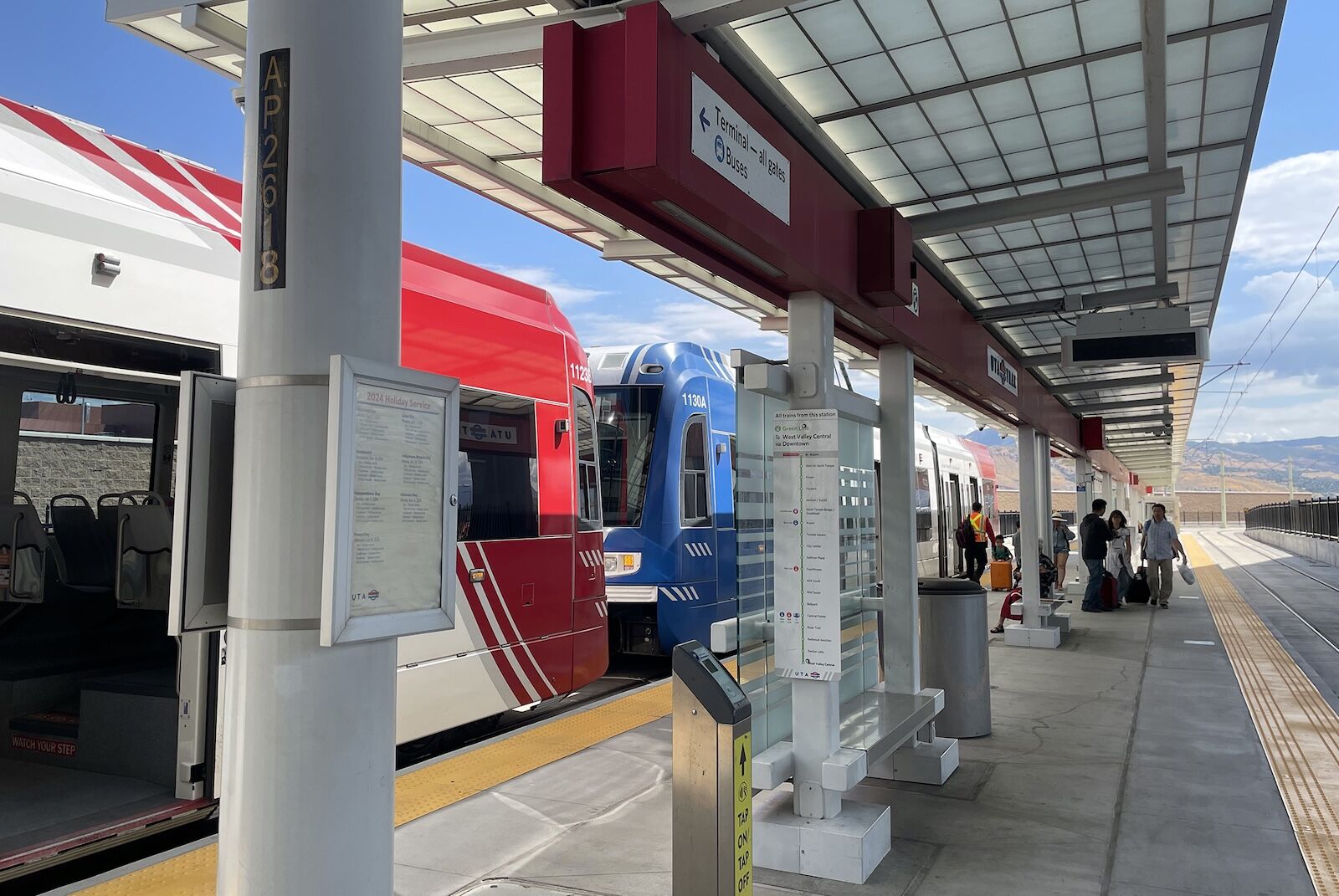
Photo: Sarah Boles
Even though Salt Lake City has public transportation in place, accessing the wildflowers in the canyons requires a vehicle. The public bus lines up in the canyons don’t run outside of the snowy season, and you might have a hard time securing a rideshare from downtown to the resorts (and especially back) during summer. Plan to rent a car from the airport, or drive your personal vehicle, if you intend to search for wildflowers in Big and Little Cottonwood Canyons.
It’s also difficult to access some attractions via public transportation. There are no direct routes from downtown to areas near the foothills, like the botanical garden, natural history museum, and zoo. If you rent a car, you can still take advantage of the ample bus lines, light rail, and electric bike and scooter rentals to move around downtown. (There’s an ever-expanding system of bike lanes in downtown Salt Lake City, and the drivers from the area are used to sharing the road.) That way you don’t have to worry about parking, especially on the weekends.
If you plan on using electric scooters during your trip, note that they’ll power down if you enter a zone where they’re prohibited. The University of Utah is a massive prohibited area, making it very difficult to check out the campus or access the botanical gardens, natural history museum, or Bonneville Shoreline Trail from downtown. When you download the app to rent a scooter, be sure to check out the prohibited zones securing a rental.